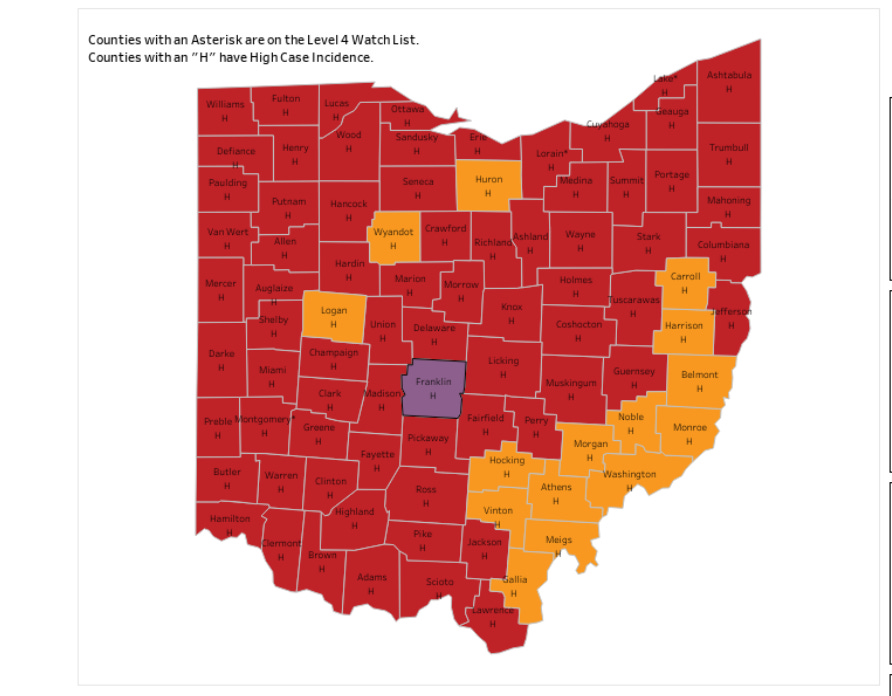What's happening in Dayton's hospitals?
A week after an Ohio court ordered hospitals to reveal capacity numbers, they still haven't been released

In George Orwell’s book, “Down and Out in Paris and London,” the British essayist found himself a patient, fighting a tremendous back pain and a 103-degree fever while filling out numerous hospital forms in Latin (things haven’t changed in that regard). Orwell’s description of the hospitals in comparison to the 1940s care in England which were the birth of modern medicine couldn’t be more different.
I’ve read Orwell’s novel several times the last nine months since the COVID-19 outbreak. While Orwell was living in poverty and a patient in his work, I find the work relating more to hospital workers. According to National Nurses United, in a September report, over 1,700 health care workers have died from treating COVID-19 in the United States. The report blames the inability of the government to accurately track COVID-19 data for the high number of deaths.
Transparency is a matter of life and death for both healthcare workers and those they treat, so it was with severe disappointment I read hospitals and local health departments have yet to comply with an Ohio court ruling, stating these agencies should provide hospital capacity numbers to media sources and the public. Eye on Ohio, a non-profit state journalism network, sued for this information seven months ago. For the entirety of the epidemic, these numbers haven’t been provided.
I’ve yet to read any information from hospitals or health departments that justifies why this information is being kept from the public. Hospital media relations often give disparate statements with no concrete information. Given the danger of the pandemic, and with a Governor’s office and state health department exasperated over the lack of mask wearing and social distancing, giving out capacity numbers would be a motivator for the public to work harder to follow mandates.
Regardless, with the state in the middle of an epidemic, not giving capacity numbers is unacceptable. Hospitals have cherry-picked times when to give numbers, such as when the epidemic is in between a surge and patient numbers have dropped. This isn’t something that should be at the disposal of public relations, it should be at the behest of the public interest. So far this has been a massive failure.
If a Dayton-area media outlet (or one in Ohio) has had the kind of access to a COVID-19 intensive care unit presented in an alarming article by the Star Tribune on Sunday (‘No Bed Anywhere’: Minnesota hospitals strained to limit by COVID-19), I’ve yet to read or watch it. Given the culture and political fight over the wearing of masks in public venues and mandates on social gatherings, this is the kind of reporting the public needs to make decisions on these issues. Right now this information isn’t being given to Ohioans or people in the Miami Valley.
This lack of transparency hits hardest for frontline medical workers, those in Emergency Rooms and converted COVID-19 units, and those working at nursing homes. The strain on these workers has been peaking for years, before COVID-19. As rules have changed for health care workers across the board - either insurance, hospitals, Medicare, Medicaid or all mentioned. Healthcare workers have been leaving the industry in high numbers for years and from across the spectrum, this was before COVID-19 turned their jobs into matters of life and death.
While many have predicted a possible collapse of the US healthcare system due to COVID-19, I don’t think they’ve gauged what the finite point might be. The fact is workers are treated as numbers and interchangeable in every industry by numbers people and an ever-more political way of management that’s now the new style of work in every business you can name. It has been killing the health care industry, with COVID-19 there may be no one else left to work by the time there’s a vaccine to administer.


